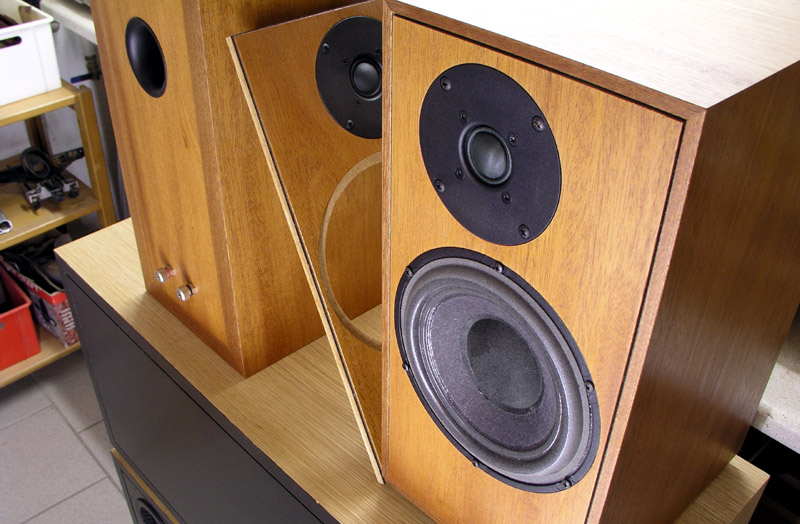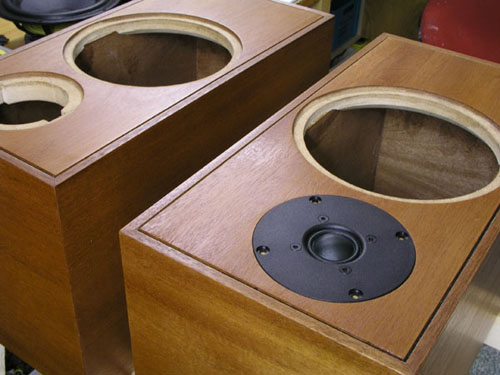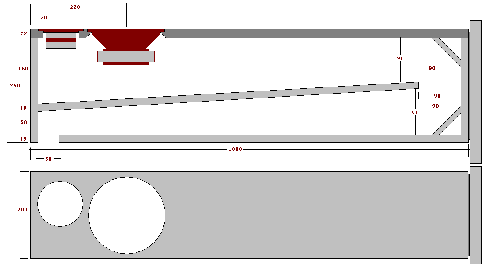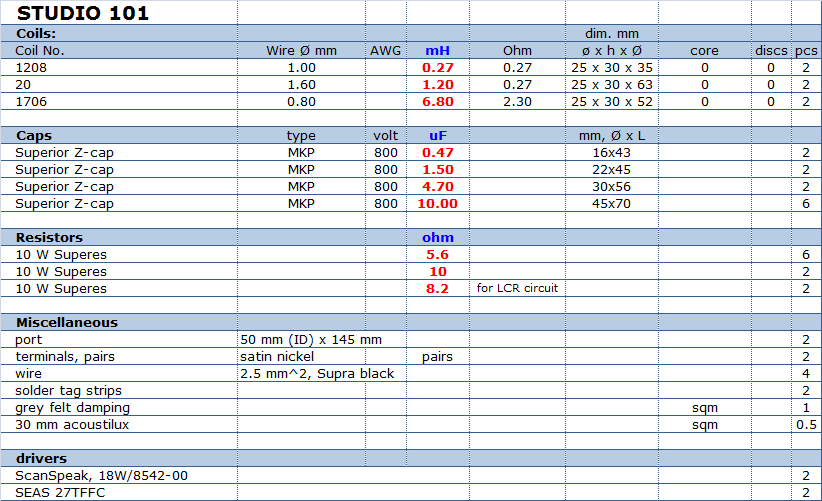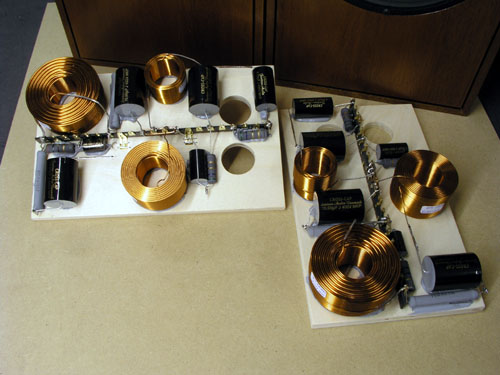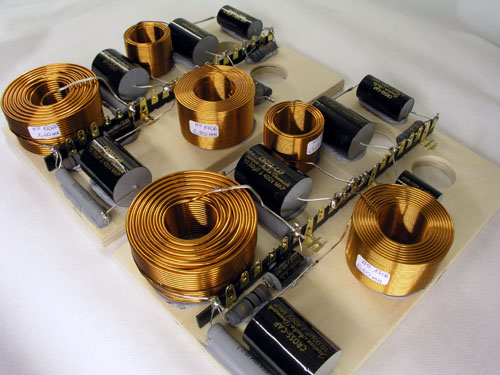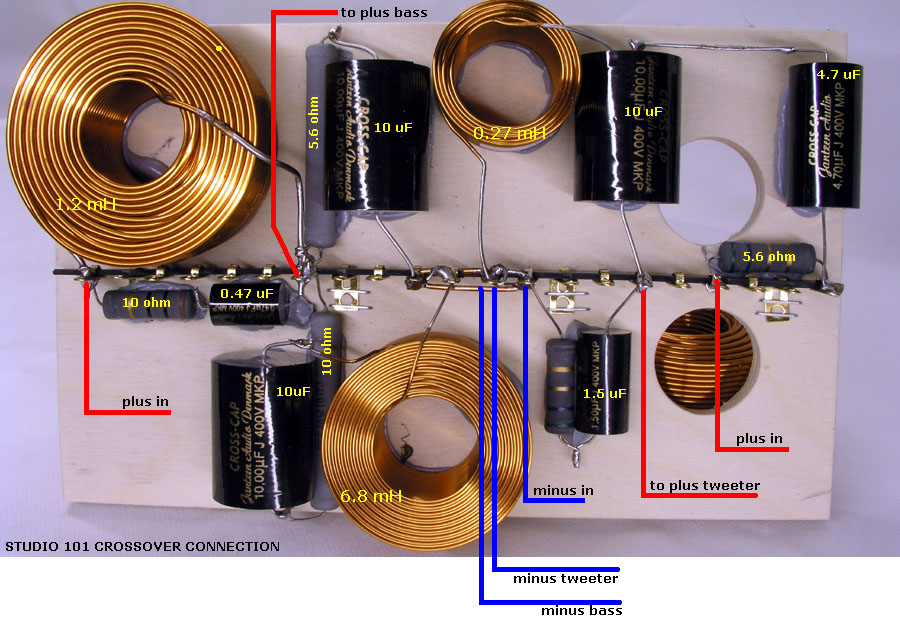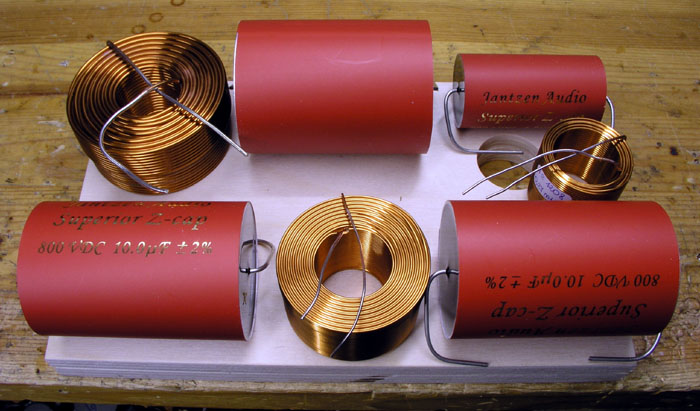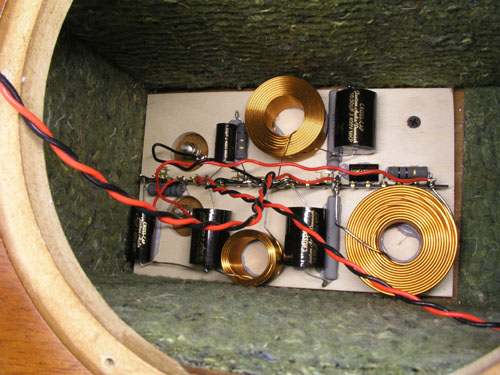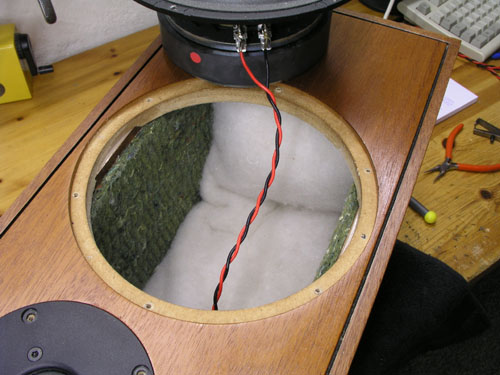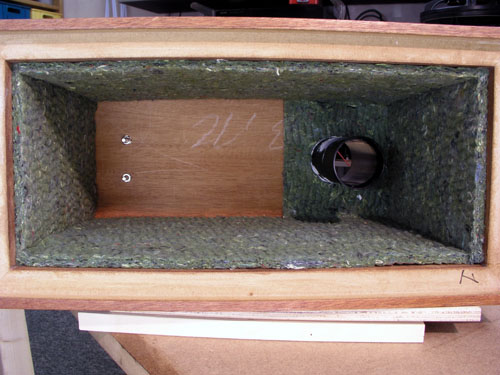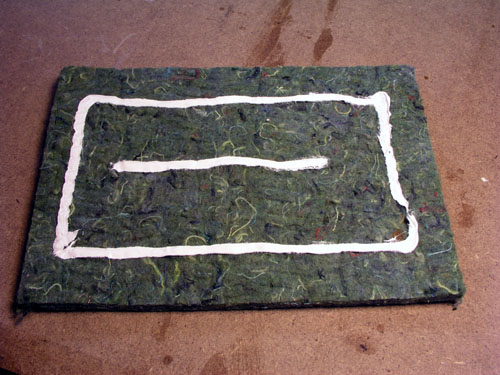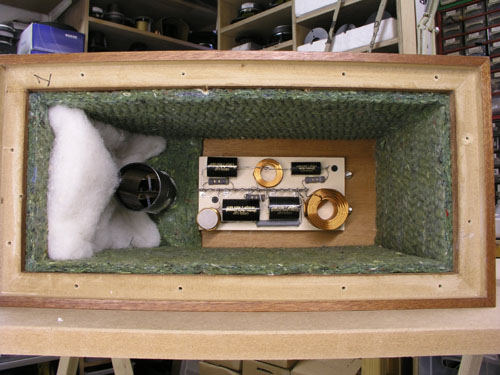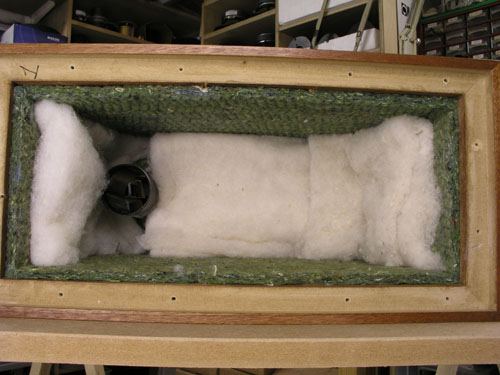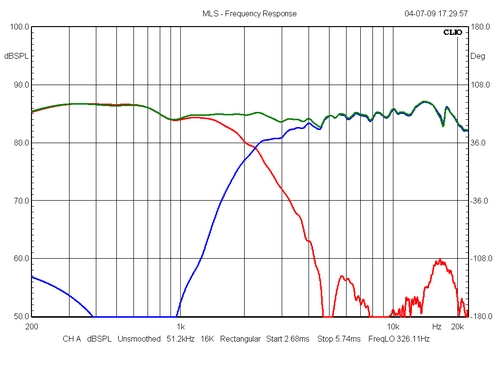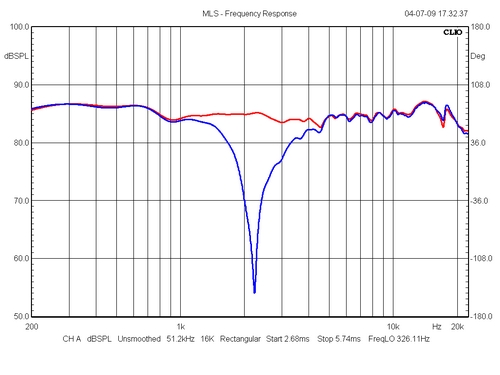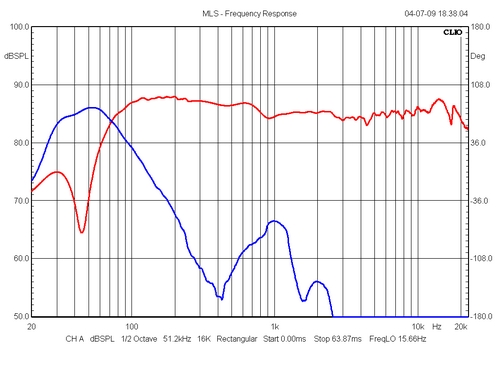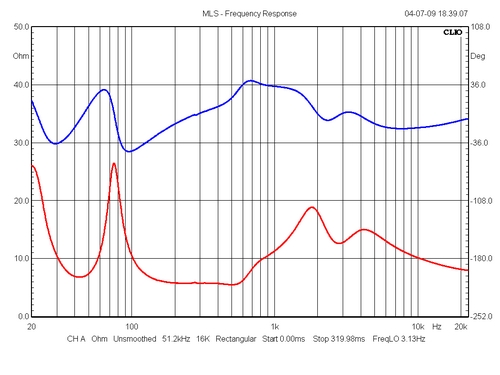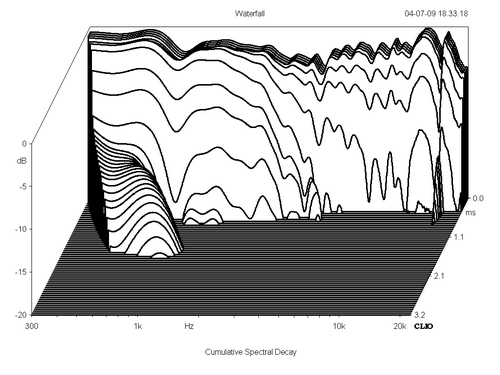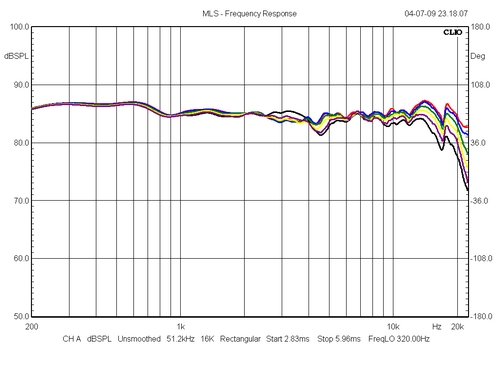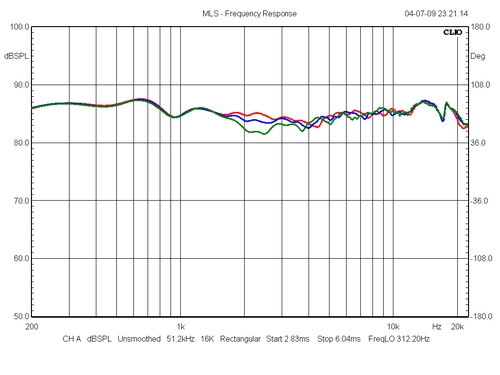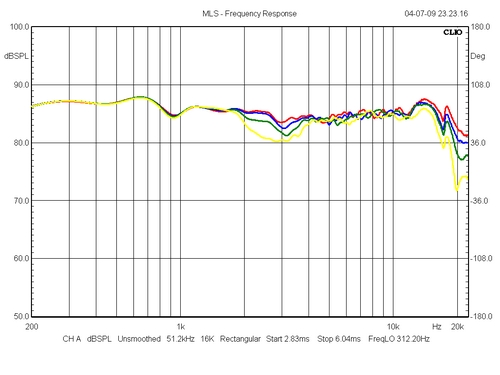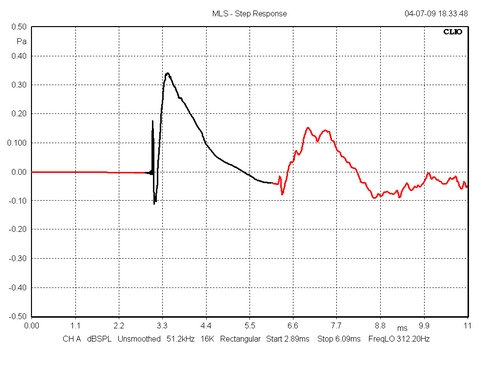|
This project has been on hold much too long, but here it finally is. A modest sized monitor from ScanSpeak 18W/8542-00 + SEAS 27TFFC. Some may find resemblance to a well-known commercial design, but the crossover here is not a clone of the original, rather a well-balanced network addressing a few problems not taken care of in the original. Now, what makes a "studio monitor" different to any other "hifi" loudspeaker? Well, a true studio monitor is supposed to have a reasonably flat on-axis response combined with an even power response, allowing studio engineers to make the best possible mix of the recording before the final master. But shouldn't all speakers be suitable for this? I guess the term "studio monitor" was derived from well engineered speakers in contrast to most home audio speakers back in the Seventies, when domestic speakers certainly was a mixed blessing of drivers balanced by a few measurements or by the ear alone. Quite often this left a lot to be desired. Only a few speakers were well balanced like the BBC studio monitors, e.g. LS35A, BC1, etc., thus the distinction between home speakers and studio monitors. Besides this, good studio monitors were often made from drivers of considerable higher quality compared drivers in home audio speakers, thus quite revealing towards poor amps and poor source material. Studio speakers were often perceived as having a flat, forward sound with lots of detail. Consequently home audio speakers quite often had a "loudness" tuning, that is: Boomy bass and too much treble. ProAc speakers fall well into this category. What is needed when a potential customer enters the local hifi shop is something that immediately captures his attention, and lots of bass and lots of treble just simply sell. This may long-term create a lot of problems once the speakers are installed at home, but when we buy something we have often our minds set strongly on that particular product and may be reluctant to return the speakers - or we may too late realise that we were seduced by that tizz'n-boom tuning we heard in the shop. The 18W/8542-00 driver is one of kind, unfortunately not often found these days: Long fibre paper pulp membrane and light-weight foam surround. Very much the same recipe used in the JA8008 driver from the TQWT and DTQWT designs. The wide acoustically transparent dust-cap used here is merely a design gimmick, creating some problems in the 5 kHz region, but targeting a point of crossover at ~2300 Hz, this problem is eliminated. Cabinet volume is ~13 litres and we have F3 = 55 Hz. Should you have room for bigger cabs, 18 liters will make F3 = 49 Hz and from 22 litres F3 = 45 Hz. If you choose to make a larger cabinet, maintain cabinet width and upper placement of drivers; that is, extend front panel below bass driver. It won't change the midrange too much. Ultimately make a 1 meter high TL floorstander like the ATR25. Details below. I had great expectations
from this monitor due to the long-fibre paper
pulp cone and I wasn't disapointed. My current
workshop amps are the 5687 triode line stage
driving a DC coupled Rotel amp. A heavily modded
Rotel CD player delivers the music and a lot of
times during crossover fine-tuning, the speakers
are set up for audition.
Download data files: ScanSpeak 18W/8542-00, SEAS 27TFFC
TL floorstander for 8542/27TFFC
Studio 101
Crossover
Complete kit with/without drivers available from contact@jantzen-audio.com Kits can be bought w/wo drivers
Download Kit Presentations here (pdf file):
All kit and component prices may be subject to change and are always to be confirmed by Jantzen Audio Denmark. All technical questions to troels.gravesen@hotmail.com
Cabinet damping
|
